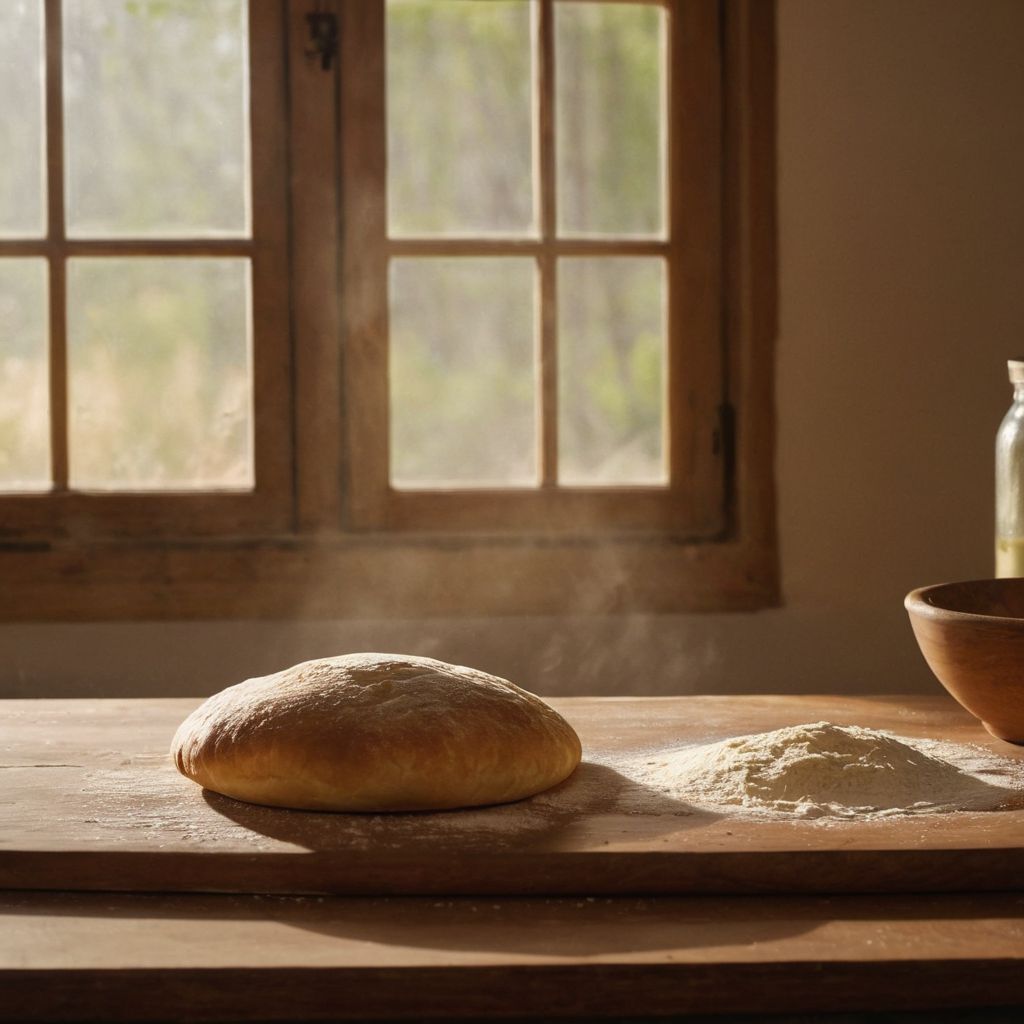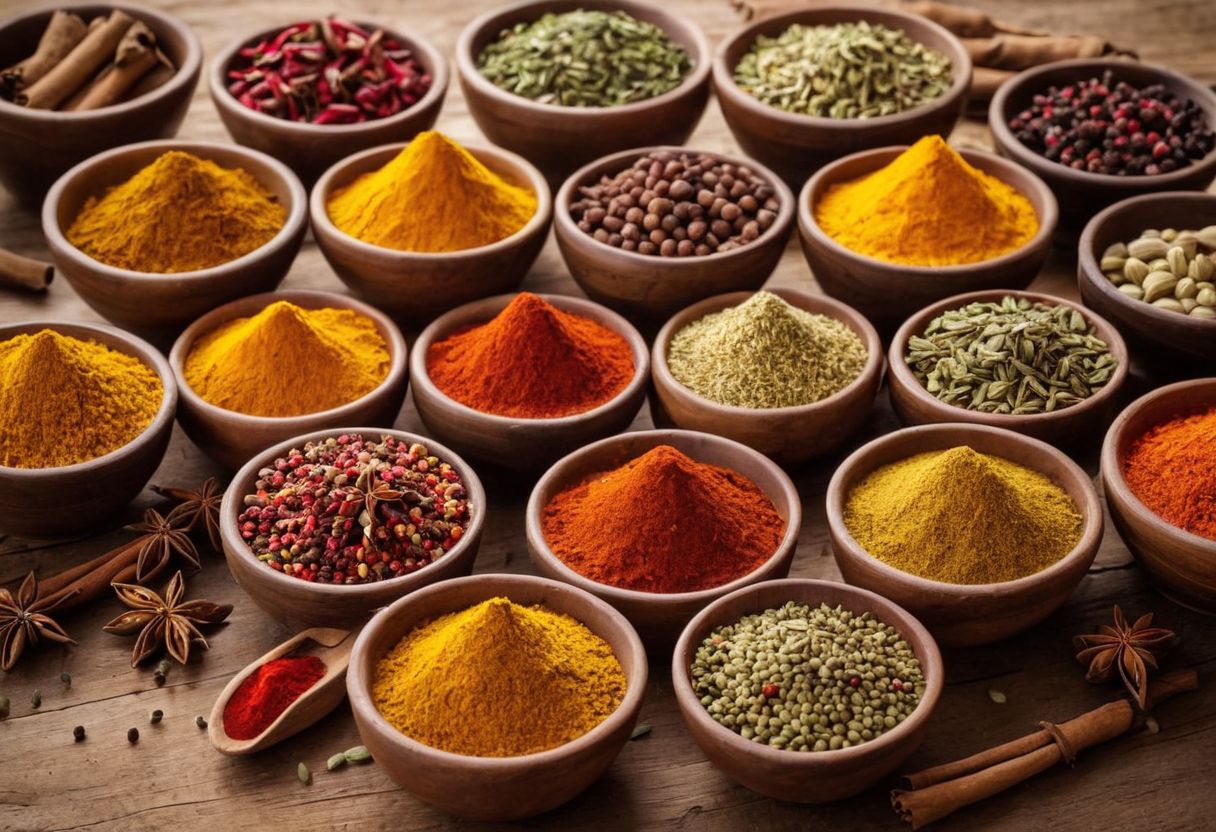Have you ever wondered what makes tandoori dishes so irresistibly delicious?
Finding the perfect blend of spices and mastering the cooking technique can be a daunting task for many.
Tandoori chicken, marinated in yogurt and spices and roasted in a tandoor, is a culinary delight that originated in India and has gained worldwide popularity.
This article will take you on a culinary journey, exploring the ancient origins, global influence, preparation techniques, and the best ways to enjoy tandoori, including variations beyond chicken and perfect pairings.
The Ancient Origins of Tandoori Cooking
Tandoori cooking, with its roots deeply embedded in the rich soil of the Indian subcontinent, is more than just a culinary technique; it’s a historical legacy. This method, which involves marinating food in a blend of spices before cooking it in a cylindrical clay oven known as a tandoor, has been part of Indian cuisine for centuries. The tandoor itself is a testament to the ingenuity of ancient cooks, who discovered that the high heat and smoky environment of the clay oven could produce food with an unmatched depth of flavor.
The journey of tandoori cooking from the ancient to the modern world is fascinating. Archaeological evidence suggests that the use of clay ovens for cooking can be traced back to the Indus Valley Civilization, making tandoori one of the oldest cooking methods still in use today. It was not just a cooking technique but also a reflection of the region’s culture and traditions. Over time, tandoori cooking spread across the Indian subcontinent and beyond, evolving with each new culture it touched, yet always retaining its distinctive essence.
Tandoori’s Global Culinary Influence
The global journey of tandoori cuisine is a remarkable story of culinary fusion and cultural exchange. From its origins in South Asia, tandoori cooking has found a place in kitchens and menus around the world, adapting to local tastes while maintaining its unique flavor profile. Tandoori chicken, for example, has become a beloved dish in many countries, often serving as an introduction to Indian cuisine for those unfamiliar with its rich flavors.
Beyond just tandoori chicken, the technique of tandoori cooking has inspired chefs globally to experiment with different ingredients and flavors, leading to innovative dishes that blend traditional Indian methods with local culinary traditions. This fusion has not only enriched global cuisine but also acted as a bridge between cultures, showcasing the universal appeal of food prepared in a tandoor oven. The adaptability and health-conscious aspect of tandoori cuisine, where extra fats drip off during cooking, have further cemented its status in the international culinary scene.
Mastering Tandoori Preparation Techniques

Mastering the art of tandoori preparation begins with understanding the importance of marination. Marinating is not just about soaking the chicken in spices; it’s a meticulous process that tenderizes the meat and infuses it with flavors from the inside out. Ingredients like yogurt, lemon juice, and a blend of spices including garam masala, red chili powder, and turmeric are essential for creating a marinade that’s both flavorful and effective in breaking down the proteins in the chicken.
The duration of marination plays a crucial role in how well the flavors are absorbed. Ideally, chicken pieces should be marinated for at least 4 to 6 hours, though leaving them overnight in the refrigerator can enhance the taste and tenderness even more. Another tip for ensuring that the marinade penetrates deeply is to score the chicken pieces with shallow cuts before marinating. This technique allows the marinade to reach further into the meat, ensuring every bite is packed with flavor.
When it comes to cooking, the traditional tandoor oven offers a unique smoky flavor and char that’s hard to replicate. However, for those without access to a tandoor, alternatives like a grill or a high-temperature oven can still produce delicious results. The key is to cook at high heat to seal in the juices and ensure the chicken is cooked through but remains moist and tender. Basting the chicken with a bit of oil or ghee during cooking can add an extra layer of flavor and prevent it from drying out.
Choosing the Best Chicken for Tandoori
Choosing the right type of chicken is fundamental for making authentic tandoori chicken. While various cuts can be used, boneless chicken thighs are often preferred for their flavor and juiciness. Thighs tend to retain moisture better than breasts, making them more forgiving during the high-heat cooking of tandoori recipes. Additionally, the darker meat of thighs is richer in taste, which complements the bold spices used in the marinade.
The freshness of the chicken also impacts the final outcome of the dish. Look for chicken with a pink hue and firm texture, avoiding any pieces that appear yellow or grey, as these may indicate the chicken is past its prime. Fresh, high-quality chicken not only ensures safety but also guarantees that the flavors of the tandoori masala, garlic cloves, and ginger in your marinade shine through, resulting in a tandoori chicken that’s truly delectable.
Tandoori Variations: Beyond Just Chicken
Tandoori cooking isn’t just about chicken; it’s a versatile method that brings a smoky flavor to a variety of dishes. Tandoori naan, for example, is a beloved choice that showcases the adaptability of this cooking style. Made from a simple dough that’s slapped onto the inner walls of the tandoor, this bread becomes an irresistible accompaniment to curries and other dishes, proving that tandoori cooking can extend far beyond meat.
Vegetarians too can enjoy the rich flavors of tandoori cuisine with options like Tandoori Gobi and Tandoori Mushroom Tikka. These dishes transform vegetables into smoky, flavorful delights that are perfect for a meal’s start or as a main course. The key to their success lies in the marination process, where yogurt and a blend of spices infuse the veggies with depth and complexity, highlighting the versatility of tandoori cooking in catering to a wide range of dietary preferences.
Perfect Pairings: What to Serve with Tandoori Chicken
When planning a meal around the vibrant flavors of tandoori chicken, selecting the right side dishes is crucial to create a balanced and harmonious dining experience. Complementary sides should not only enhance the taste of the chicken but also bring variety and balance to the meal. Consider incorporating dishes that offer a contrast in texture and flavor, such as a cooling cucumber raita to soothe the palate or a crisp, tangy salad to cut through the richness of the chicken. Other great options include:
- Steamed basmati rice or fluffy naan bread to soak up the flavorful juices
- Grilled vegetables with a hint of char to mirror the smokiness of the tandoori
- Lentil dishes, like dal, that provide a comforting earthiness
Beyond these staples, exploring regional Indian cuisine can uncover even more exciting pairings for tandoori chicken. Aloo Gobi, a spiced cauliflower and potato dish, adds a delightful texture and is a vegetarian counterpoint to the meat. Saag paneer, with its creamy spinach and paneer cheese, offers a rich and satisfying side that complements the spices of tandoori chicken beautifully. Remember, the key to perfect pairings is in balancing the bold flavors of the chicken with sides that can stand up to and complement its taste, without overshadowing the star of the meal. This approach ensures that each bite is a journey through the delightful contrasts that Indian cuisine so masterfully presents.
Explore Tandoori Flavors with INDULGE in Zurich
If you’re captivated by the rich flavors and history of tandoori cooking, INDULGE offers a unique opportunity to dive deeper into this culinary tradition right in the heart of Zurich. Through their curated culinary tours, you can experience the best of international cuisines, including the smoky and spicy delights of tandoori dishes. Whether you’re a local food enthusiast or a traveler seeking gastronomic adventures, INDULGE’s tours are designed to cater to your culinary curiosity, providing an immersive experience that goes beyond the plate.
Here’s what sets INDULGE apart in your quest to explore tandoori flavors and more:
- Guided tours led by local culinary experts who share insights into the history and techniques behind tandoori cooking
- A chance to taste authentic tandoori dishes alongside other international cuisines, showcasing how Zurich has embraced global flavors
- Exclusive dining experiences that offer a deeper understanding of food pairings and culinary traditions from around the world
To embark on this flavorful journey and elevate your appreciation for tandoori and other cuisines, visit INDULGE’s website and book your tour today.
Frequently Asked Questions
What is in a tandoori?
Tandoori refers to a cooking method where food is marinated in a blend of spices and then cooked in a tandoor, a cylindrical clay oven. The marinade typically includes yogurt, lemon juice, and a blend of spices such as garam masala, red chili powder, and turmeric. Tandoori dishes can range from meats like chicken to vegetables and bread like naan.
What does tandoori style mean?
Tandoori style refers to the technique of marinating food in a mixture of spices and yogurt, and then cooking it at high temperatures in a tandoor, a traditional clay oven. This style is noted for the smoky flavor and char it imparts to the food, as well as the reddish hue from the spices. Tandoori cooking is versatile and can be applied to various ingredients, including chicken, vegetables, and bread.
What is tandoori marinade made of?
Tandoori marinade is made of a flavorful and aromatic blend of ingredients including yogurt, lemon juice, and a variety of spices such as garam masala, red chili powder, and turmeric. This combination not only infuses the food with rich flavors but also tenderizes it, ensuring that it remains moist and tender during the high-heat cooking process.
Why is it called tandoori?
The term “tandoori” comes from the word “tandoor,” which is the cylindrical clay oven used in this cooking method. The tandoor is essential for creating the high heat and smoky environment that characterizes tandoori dishes. The name reflects both the cooking technique and the distinctive flavors that result from this traditional method.








